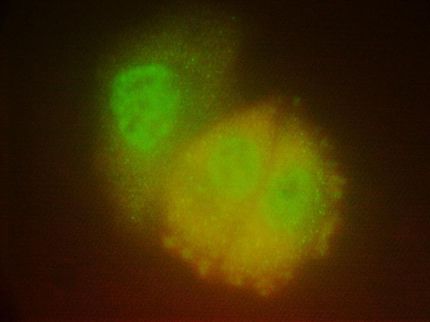Signaling molecules regulated
Study uncovers key mechanisms of communication within cells
Advertisement
A unique bridging process may be behind a mystery of intracellular communication, according to new Cornell research published in the journal Cell. Researchers at Cornell's Weill Institute for Cell and Molecular Biology have uncovered how certain signaling molecules in the cell are regulated.
The signaling molecules, called phosphoinositide (PI) lipids, are key components of the plasma membrane that surrounds a cell. PI lipids are important in signaling processes involved in cell growth and development, responses to extracellular signals, and transport pathways in and out of the cell. Misregulation of PI lipids has been linked to several diseases, including cancer, diabetes, and developmental and neurodegenerative diseases.
"All inherited disorders correspond to defects at the cellular level," said Scott Emr, director of the Weill Institute and senior author of the paper. "Understanding the fundamental aspects of the cellular basis of these signaling pathways is absolutely essential to understand and treat diseases like cancer."
Much like an on-and-off switch, many cellular actions, including the functions of PI lipids, are activated by attaching a phosphate group to proteins or lipids (a process called phosphorylation), and similarly, deactivated by the removal of the phosphate group. A class of enzymes called phosphatases mediates the removal of phosphates.
"Previous research has focused on the enzymes called kinases that add phosphates to proteins or lipids (on-switch). We considered the alternative that phosphatases (off-switch) have crucial roles in regulating essential signaling pathways that take place at the cell surface," explained first-author Chris Stefan, a senior research associate in Emr's lab.
The researchers studied a PI lipid phosphatase called sac1, an enzyme that resides in the endoplasmic reticulum, an organelle inside the cell responsible for the synthesis of proteins and lipids and for regulating calcium signaling.
"The puzzle was how sac1 in the endoplasmic reticulum regulates PI lipids in a distinct membrane compartment, the plasma membrane," said Stefan.
"We discovered that a family of proteins, called osh proteins, provides the molecular bridge between PI lipids in the plasma membrane and the phosphatase sac1 in the endoplasmic reticulum," explained co-author and graduate student Andrew Manford.
The osh proteins sense PI lipid levels and respond by creating a kind of scaffolding between the plasma membrane and endoplasmic reticulum, providing the missing link between these two distinct membrane systems. This allows the sac1 phosphatase to shut down PI lipids during communication between these two separate cellular compartments.


























































